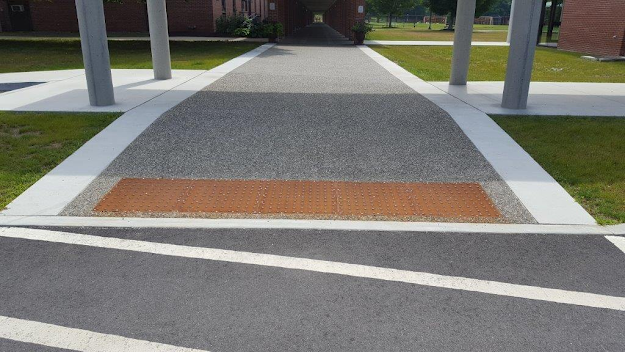Cast Iron Detectable Warnings: Ensuring Safe and Accessible Spaces for All
In today's fast-paced world, where everyone is rushing to get from one place to another, it's easy to overlook the importance of accessibility. However, for the millions of people worldwide who have disabilities, accessibility is not a luxury, but a necessity. It is essential to ensure that public spaces are designed to accommodate individuals with disabilities, allowing them to navigate through their surroundings independently and safely. One of the most critical elements of accessible design is the installation of detectable warnings, and cast iron detectable warnings have emerged as the preferred choice for many designers and architects.
What Are Detectable Warnings?
Detectable warnings are a type of tactile paving that
provides a distinctive surface pattern designed to alert individuals with
visual impairments to an approaching hazard. These warnings are required by law
in many countries, including the United States, under the Americans with
Disabilities Act (ADA). The ADA stipulates that detectable warnings must be
installed at all curb ramps, platform edges, and other hazardous locations to
help visually impaired individuals navigate their surroundings safely.
Detectable warnings can be made from a variety of materials,
including plastic, concrete, and cast iron. Each material has its advantages
and disadvantages, but cast iron has emerged as the preferred choice for many
designers and architects.
Why Cast Iron?
Cast iron detectable warnings have several advantages over
other materials. Firstly, cast iron is an extremely durable material that can
withstand heavy foot traffic and extreme weather conditions, making it a
long-lasting and cost-effective solution. Cast iron is also resistant to fading
and erosion, ensuring that the warnings remain visible and effective over time.
In addition to its durability, cast iron has a distinctive
tactile surface that is easy to detect with a cane or other mobility aid,
making it an excellent choice for visually impaired individuals. Cast iron
detectable warnings also have a high coefficient of friction, providing extra
grip and stability for wheelchair users and individuals with mobility issues.
Cast iron detectable warnings also have an aesthetic appeal
that other materials cannot match. Cast iron has a classic and timeless look
that complements traditional architecture and urban landscapes, making it an
excellent choice for heritage buildings, public spaces, and urban regeneration
projects.
Installation And Maintenance
Installation and maintenance of cast iron detectable
warnings are relatively simple, making them a popular choice for designers and
architects. The warnings can be installed on most surfaces, including concrete,
asphalt, and pavers, using adhesive or mechanical fixings. Cast iron detectable warnings
require minimal maintenance, with occasional cleaning and inspection to ensure
they remain effective.
Conclusion
Accessibility is essential for creating safe and inclusive
public spaces. Cast iron detectable warnings have emerged as a popular choice
for designers and architects, providing a durable, tactile, and aesthetically
pleasing solution that helps visually impaired individuals navigate their
surroundings safely. Cast iron detectable warnings are easy to install and
require minimal maintenance, making them a cost-effective and long-lasting
solution for all types of public spaces.



Comments
Post a Comment